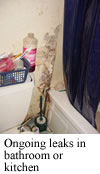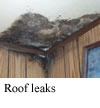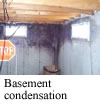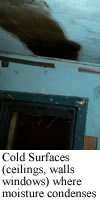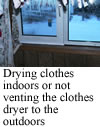

|
|
||||
|
||||
 |
|||||||
| Introduction
|
|||||||
Mold is a problem worthy of careful attention not just in Indian Country, but also in communities throughout North America. Recently, some tribes have experienced serious conditions. For most people, small amounts of mold in their home (for example, on a shower curtain, on grout on tile above the bathtub, or in the corners of a window) are not a big problem. But, extensive amounts of mold in a house may lead to trouble. A fundamental goal is to provide safe, comfortable, efficient, durable housing for everyone in the community. A house that has been protected from mold problems will potentially last longer, which is important in communities with chronic housing shortages. If there is mold growing in a home, there is usually a moisture problem. Keeping the house dry is the key to preventing mold from becoming a problem. Finding and fixing the moisture problem, will help solve the mold problem. Common Causes of Mold in Houses The following is a list of common ways that excess moisture gets into houses, creating conditions that enable mold to grow.
This website
contains mold basics, ideas on how to become a “mold and moisture
detective” to solve moisture problems, and how to prevent
mold problems. Because the problems of mold and moisture in homes
are so widespread throughout the country, there are many U.S. government
agencies (federal, state, and local) and private organizations that
also have websites with established procedures and guidelines for
identifying and remediating mold and moisture problems in houses.
We suggest that you also visit some of those sites to get additional
information. A list of sites with links is provided by
clicking here. |
|||||||
